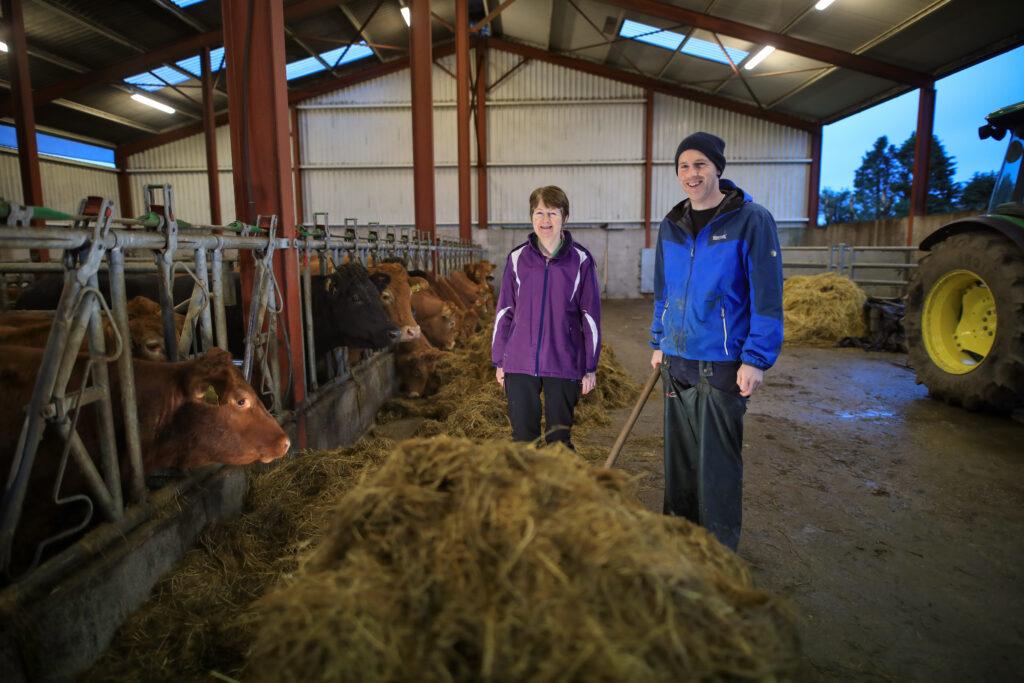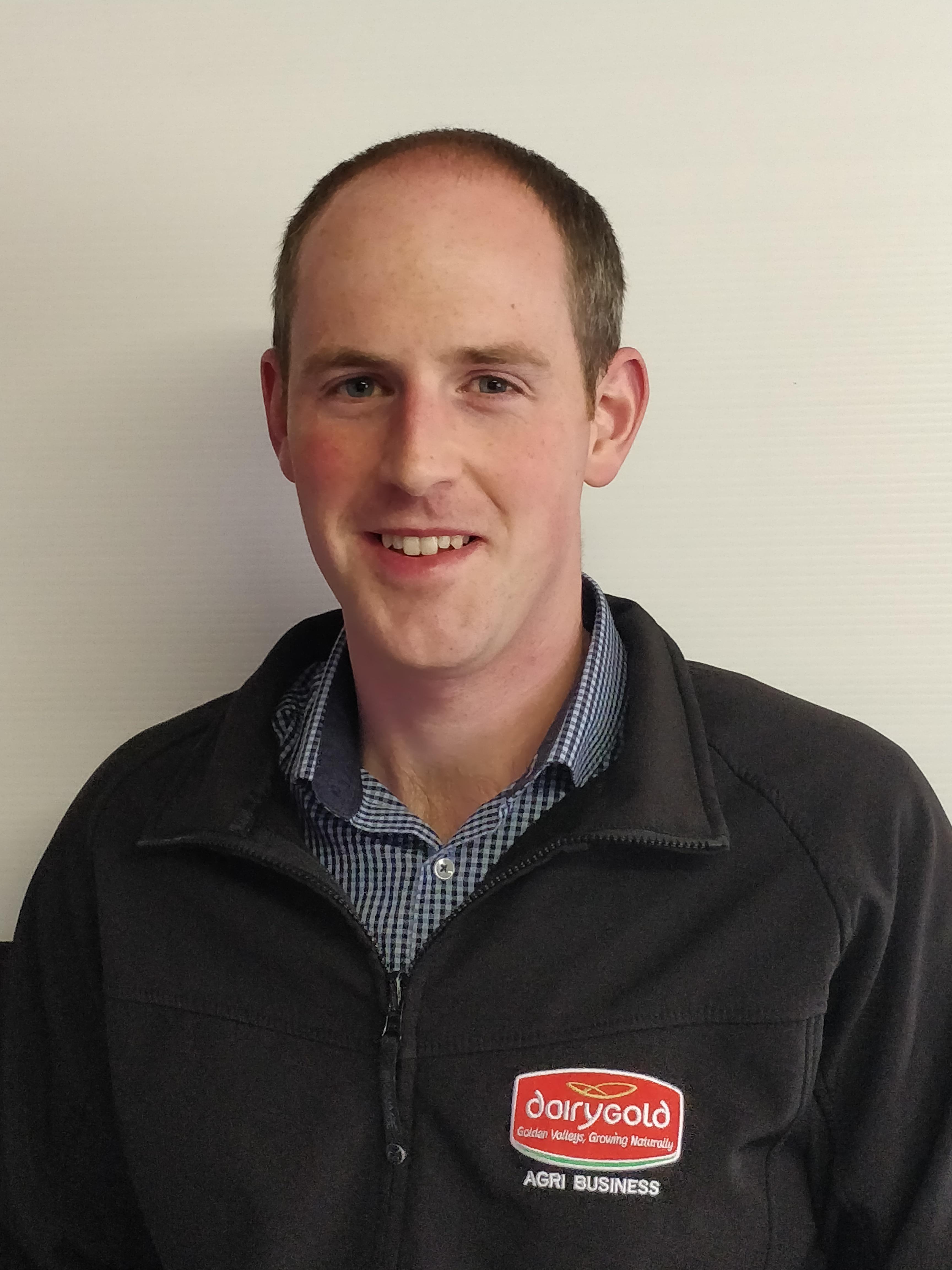Get a 24 hour weather forecast

Edmond Curtin is based in Meelin, Newmarket in Co. Cork. He is farming in partnership with his mother Breda and they are operating a suckler-to-weanling and calf-to-store/Calf to Beef enterprise. The farm consists of three main blocks of land, approximately 43 ha in total. One of these blocks is a Special Protection Area for hen harriers which means that farming restrictions are in place to protect the habitat for these birds. This farm is part of the Teagasc Future Beef Programme focusing on breeding, grassland management and animal health. Edmond also works full time as an Area Sales Manager with Dairygold covering the area of Cork City North.
The focus on farm is:
Challenges
The suckler herd consists of 25 Limousin cows. They are 7/8 bred to 90% Limousin through years of crossing Limousin on Limousin. Maternal bloodlines would be used to retain milk and fertility within the herd. Artificial Insemination has been solely used in the herd from over 30 years. The cow type in herd resembles a “Dublin Bus” – cows are long, moderate to large in size with width at the pins and plates in order to calve Belgian Blues. Milk and fertility are a major focus within the herd and sires are selected to enhance these traits. Heifers that are retained in the herd for breeding are bred from the best performing cows and they fit this criterion and must hit target weights at weaning and beyond in order to have the ability and size to calve at 24 months. Mature cow size has been in focus in recent years with mature cows weighing 50 to 80kg less than previous years. This management tool has worked well for several reasons but predominantly cow maintenance and cost being a key factor. It has been found that a bigger cow does not rear a calf any heavier at weaning.

“You can’t control what you don’t measure”
The herd for 2022 is 100% Autumn calving with calving starting at the beginning of August and will finish at the start of November. Autumn calving suits the heavy nature of the land. Winters are six months and at times longer. Breeding starts in the last days of October. Cows and heifers are pre scanned before the breeding season starts to identify cows not cycling or any uterine issue which would affect conception rates. Cows are monitored early morning before feeding and at 11pm during the breeding season. Edmond finds most heats are observed at night.
The breed of choice to breed from the herd of Limousin cows is Belgian Blue. Sires that are selected are usually easy calving at about 8% calving difficulty. It has been found that given the background breeding in the cow that easier calving sires can be selected without compromising on calf quality. The Limousin cow brings length, power, and shape to the blue cross calves.
The replacement heifers are bred to calve at 24 months of age and are A. I’d to red Angus sires. The advantage of the red Angus is their easy calving, low birth weights and short gestation length. They cross extremely well with Limousins and their advantage within the system is that the heifers can are finished at 16/17 months of age at 300kgs carcase weight. They grade R+ and U grade and attract both the Quality Assurance and Angus breed bonus premiums. Red Angus bulls could be finished on farm but given the small number of them they are sold as weanlings at 420kgs liveweight at 11 months.
In terms of herd performance, these calves perform well and averaged 1.12 kg per day for 2020 born heifers and 1.26 kg per day for the bulls. The weanlings are sold in Gortatlea Mart in Co Kerry at the Special E and U grade sales. Both heifers and bulls are sold at 400 to 450kgs at 11 months of age.
“I believe cattle are here for a good time not a long time, achieve weight for age in cattle and monitor daily liveweight gain performance”
As with all autumn-calving and dairy beef systems, making good quality silage is crucial on the farm. He aims to make his silage around the 20th of May every year and targets over 72 DMD. This ensures that his cow’s milk well, are in good condition for breeding and that his calves, weanlings, and stores perform well over their first. Testing the silage reduces ration costs, as less meal need to be fed with good quality silage to balance diets. Producing good silage also contributes to a reduction in methane emissions in cattle, as less energy is required for them to digest leafy silage in comparison to poorer quality, stemmy silage. I take the same approach with meal, only feeding a high UFL cubed that is balanced evenly with PDIN and PDIE; the product of choice being Prime Elite Maize Cube 14%. Cattle are regularly weighed to ensure that stock are performing to their optimum, through a combination of good health, breeding and nutrition.
Edmond also buys in 30 to 35 dairy-bred Angus, Hereford and Friesian bull calves and sells these either as forward store bullocks at 550kgs plus or finishes them (depending on the market) at 22 months of age. This Winter, based on current factory prices and performance over their lifetime, it was decided to finish all the 2020 born bullocks out of shed by the start of February 2022. The finishing cattle were weighed on January 1st and averaged 625kgs at 21.5 months. Cattle will be selected over the coming weeks for slaughter.
Edmond also works full time as an Area Sales Manager with Dairygold covering the area of Cork City North. In his role as Area Sales Manager, Edmond works closely with farmers to advise on all aspects on animal husbandry and grassland management. To contact your local Area Sales Manager click here.